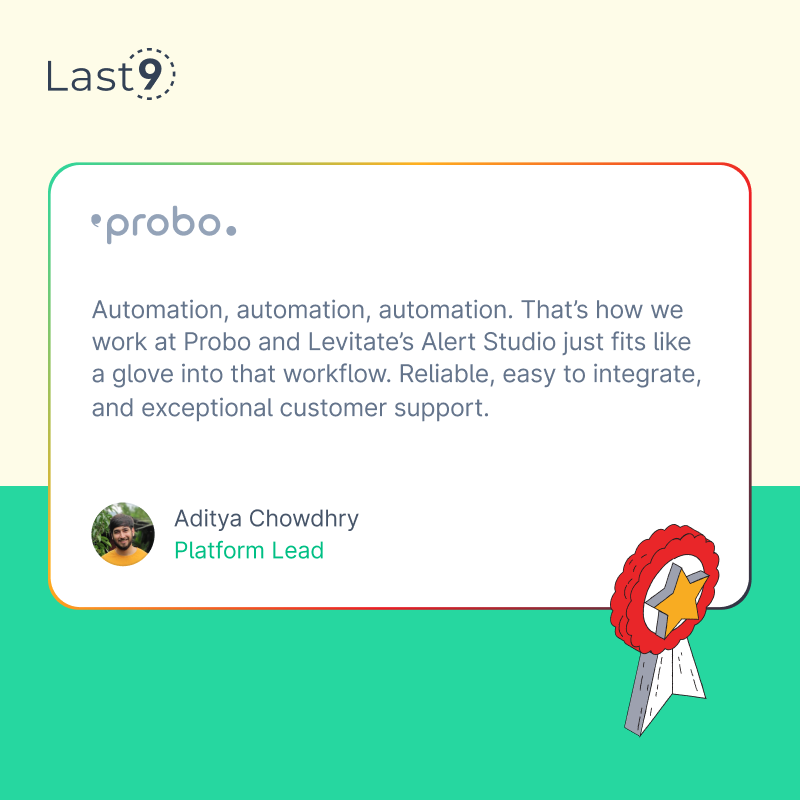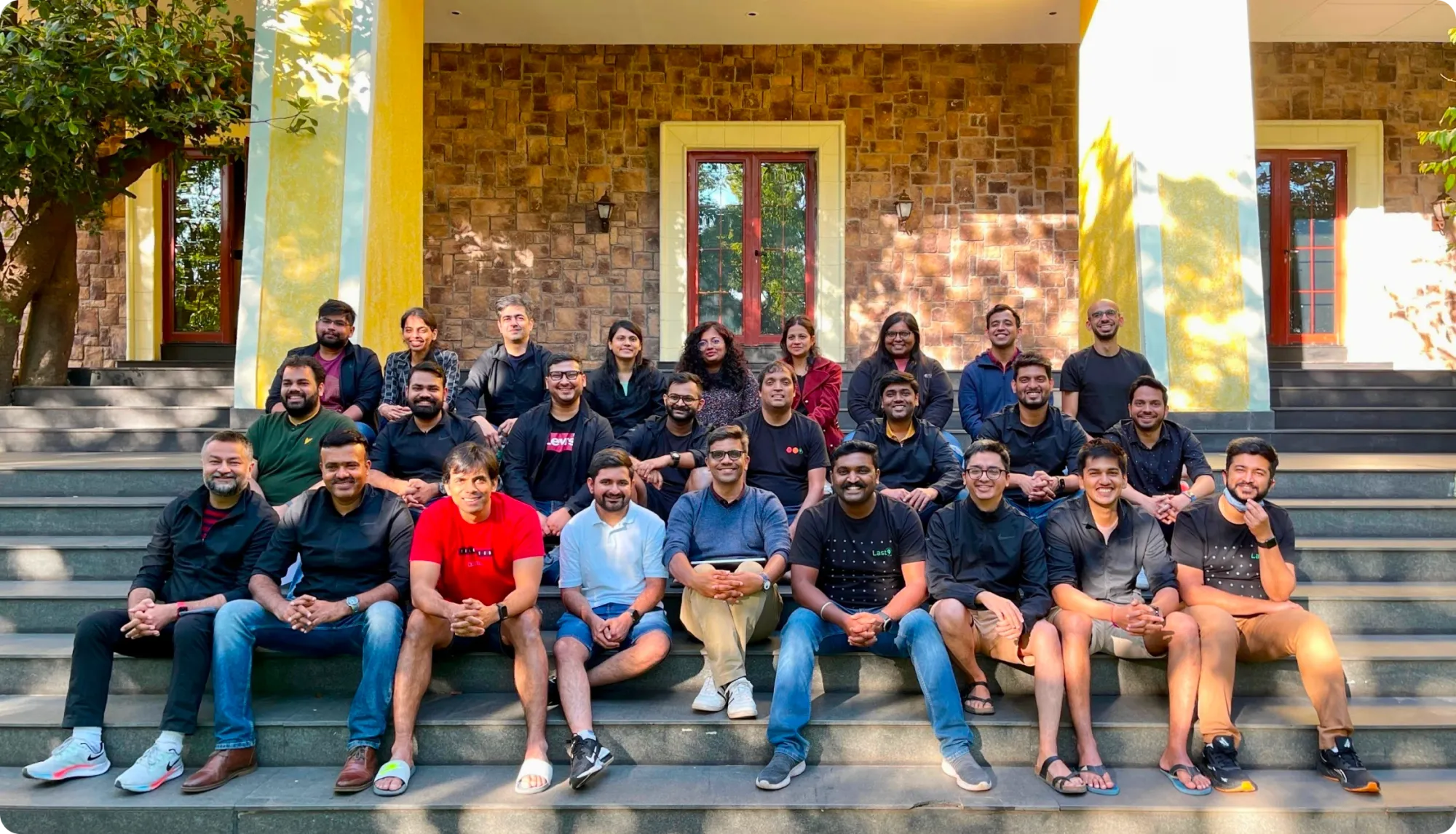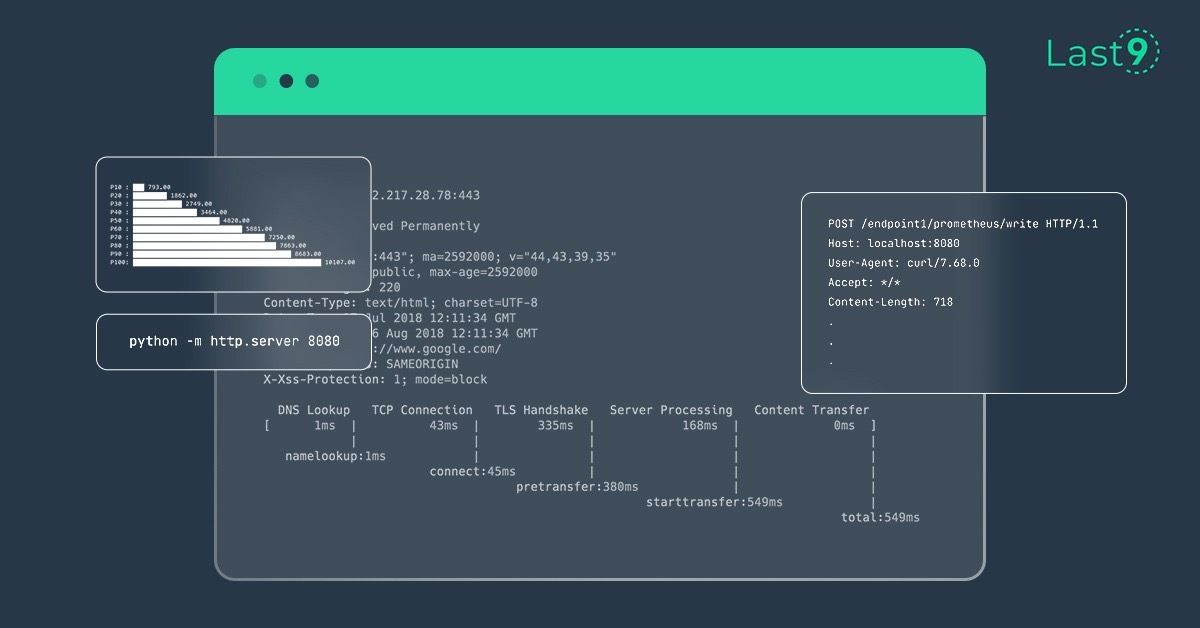Platform engineering is transforming the way we tackle software development and operations. In this guide, we’ll look at 10 of the top tools making waves in 2024—tools designed to simplify workflows, improve team collaboration, and increase efficiency.
Whether you're just starting out or have been in DevOps for a while, these tools are sure to make a noticeable impact on how you work.
Introduction:
I've seen a significant shift in how organizations approach software development and operations in recent years. Platform engineering – a discipline that's rapidly gaining traction and for good reason.
What is Platform Engineering?
Platform engineering is the practice of designing, building, and maintaining the infrastructure, tools, and workflows that enable software development teams to efficiently deliver and operate applications.
It's about creating a robust, scalable, and user-friendly platform that abstracts away the complexity of underlying infrastructure and streamlines the development process.
Platform Engineering vs. DevOps: Understanding the Distinction
One question I often get is, "How is platform engineering different from DevOps?"
Though they share some common goals, DevOps and platform engineering are quite different. DevOps focuses on enhancing teamwork between development and operations teams. It aims to break down silos and promote shared responsibility for delivering and maintaining software.
Platform engineering, however, focuses on building a standardized platform that makes it easier for developers to adopt DevOps practices and work more efficiently.
Platform Engineering vs. SRE:
Another common question is how platform engineering relates to Site Reliability Engineering (SRE).
- SRE focuses on ensuring the reliability and performance of systems and services.
- Platform engineering provides the tools and infrastructure that enable SRE practices.
In many organizations, platform engineers and SREs work hand in hand. The platform team builds the foundation, while SREs use and extend that foundation to ensure system reliability.
Now, let’s explore the core of platform engineering: the tools. These are the essential components that enable us to build robust and efficient developer platforms.
What Are Platform Engineering Tools?
Platform engineering tools are software solutions that help in building, managing, and optimizing the development platform. They range from infrastructure provisioning tools to CI/CD pipelines, monitoring solutions, and developer productivity enhancers.
The Impact of Platform Engineering Tools on Developer Experience
The right tools can significantly enhance the developer experience. For example:
When organizations implement internal developer platforms using a mix of Kubernetes, Terraform, and Argo CD, the benefits are often immediate:
- Developers gain the ability to self-service their infrastructure needs without relying on operations teams.
- Deployment times can be reduced from hours to minutes.
- Onboarding new team members becomes smoother with standardized environments and workflows.
The result? Improved developer satisfaction, faster time-to-market, and more reliable systems. It’s a clear win for both teams and the organization.
Top 10 Platform Engineering Tools
1. Kubernetes
Features:
- Container orchestration
- Automatic scaling and load balancing
- Self-healing capabilities
- Declarative configuration
- Extensive ecosystem of add-ons and integrations
Use Cases:
- Deploying and managing microservices architectures
- Running stateless and stateful applications
- Implementing blue-green and canary deployments
- Managing batch jobs and cron jobs
Kubernetes has transformed how complex, distributed systems are managed. It's widely adopted for orchestrating microservices architectures across various cloud platforms, boosting both scalability and reliability for applications.
2. Docker
Features:
- Containerization of applications and dependencies
- Portable and consistent environments
- Efficient resource utilization
- Version control for containers
- Multi-stage builds
Use Cases:
- Packaging applications and their dependencies
- Creating consistent development, testing, and production environments
- Simplifying CI/CD pipelines
- Enabling microservices architectures
Docker has transformed application packaging and deployment. It tackles the "it works on my machine" issue by ensuring consistent environments across development and deployment stages.
3. Terraform
Features:
- Infrastructure as Code (IaC)
- Multi-cloud support
- Declarative language
- State management
- Modular architecture
Use Cases:
- Provisioning and managing cloud infrastructure
- Implementing multi-cloud and hybrid cloud strategies
- Version controlling infrastructure
- Automating infrastructure changes
Terraform has been invaluable in my projects for managing infrastructure across different cloud providers. Its declarative approach and state management capabilities have significantly reduced errors and improved our infrastructure's reproducibility.
4. Jenkins
Features:
- Extensible automation server
- Rich ecosystem of plugins
- Distributed builds
- Pipeline as Code
- Integration with various SCM systems
Use Cases:
- Implementing CI/CD pipelines
- Automating build, test, and deployment processes
- Orchestrating complex workflows
- Integrating with various development and operations tools
Jenkins has been a staple in my CI/CD toolkit. Its flexibility and extensive plugin ecosystem have allowed teams to automate complex workflows and integrate with a wide range of tools.
5. Ansible
Features:
- Agentless architecture
- YAML-based playbooks
- Idempotent operations
- Extensive module library
- Dynamic inventory
Use Cases:
- Configuration management
- Application deployment
- Orchestrating complex IT workflows
- Provisioning cloud resources
Ansible particularly is useful for managing configurations across large numbers of servers. Its agentless architecture and idempotent operations make it easy to maintain consistent environments at scale.
6. Prometheus
Features:
- Multi-dimensional data model
- Flexible query language (PromQL)
- Pull-based metrics collection
- Service discovery
- Alerting capabilities
Use Cases:
- Monitoring application and system metrics
- Implementing alerting and on-call strategies
- Troubleshooting performance issues
- Capacity planning
Prometheus has been crucial in my projects for gaining insights into system performance. Its powerful query language and alerting capabilities have helped us proactively address issues before they impact users.
7. Grafana
Features:
- Multi-platform support
- Customizable dashboards
- Alerting and notifications
- Diverse data source integrations
- Templating and variables
Use Cases:
- Visualizing metrics from various data sources
- Creating comprehensive system dashboards
- Implementing alerting based on complex conditions
- Sharing insights across teams
Grafana is extensively used to create dashboards that provide at-a-glance views of our systems' health. Its ability to integrate with multiple data sources allows developers to create comprehensive views of our entire infrastructure.
8. GitLab
Features:
- Integrated SCM, CI/CD, and project management
- Built-in container registry
- Kubernetes integration
- Code review tools
- Security scanning
Use Cases:
- End-to-end DevOps workflows
- Implementing GitOps practices
- Managing the entire software development lifecycle
- Collaborative software development
GitLab has been a one-stop shop for many of my projects, providing a unified platform for code management, CI/CD, and collaboration. Its integrated approach has significantly streamlined our development workflows.
9.Last9 Levitate
Features:
- Real-time data analysis for high-cardinality data
- Advanced observability capabilities
- Automated dependency mapping
- Anomaly detection and alerting
Use Cases:
- Managing complex microservices architectures
- Troubleshooting performance issues in distributed systems
- Optimizing resource utilization across cloud environments
- Implementing proactive incident response strategies
Levitate is all about simplifying the management of complex data. It effortlessly integrates with OTel and Prometheus, giving you a powerful tool for handling logs, metrics, and traces. With Levitate, you can easily connect the dots and get a clear, comprehensive view of your system’s performance.

10. Argo CD
Features:
- GitOps-based continuous delivery for Kubernetes
- Automated deployment and synchronization
- Multi-cluster management
- Role-Based Access Control (RBAC)
- Webhook integration
- Web UI, CLI, and API interfaces
Use Cases:
- Implementing GitOps workflows
- Automating Kubernetes deployments
- Managing application configurations across multiple environments
- Ensuring consistency between Git repositories and live cluster states
- Simplifying rollbacks and version control for infrastructure
Argo CD is a declarative, GitOps continuous delivery tool for Kubernetes that supports multi-cluster deployments and provides robust rollback capabilities, making it invaluable for managing complex, distributed systems and ensuring consistency across environments.
Integrating Platform Engineering Tools
Each of these tools is great on its own, but the real benefits come when you bring them together into a unified system.
Here’s an example of how these tools might work together in a typical platform engineering setup:
- Developers commit code to GitLab, triggering a CI/CD pipeline.
- Jenkins orchestrates the build process, using Docker to create consistent build environments.
- The application is containerized and pushed to a container registry.
- Terraform provisions the necessary infrastructure on AWS, Azure, or Google Cloud.
- Argo CD manages the deployment of the containerized application to Kubernetes, ensuring the cluster state matches the desired state in Git.
- Kubernetes manages the scaling and availability of the deployed application.
- Ansible handles any additional configuration management tasks.
- Prometheus collects metrics from the running application and infrastructure.
- Grafana visualizes these metrics in custom dashboards.
- Last9 Levitate, as a High Cardinality Telemetry Warehouse, integrates with OTel and Prometheus to manage logs, metrics, and traces. It helps uncover connections and enhance monitoring across complex microservices.
Best Practices for Implementing Platform Engineering
Here are some best practices my team and I found crucial for successful platform engineering:
- Start with Developer Needs: Always begin by understanding the pain points of your development teams.
- Embrace Infrastructure as Code: Use tools like Terraform to version-control your infrastructure. This practice enhances repeatability and reduces errors.
- Automate Everything: From testing to deployment, look for opportunities to automate. The more you automate, the more reliable your processes become.
- Implement Robust Observability: Use tools like Grafana, and Last9 Levitate to gain insights into your platform's performance, usage, and complex interdependencies.
- Security First: Integrate security at every level of your platform. Embrace DevSecOps practices.
- Incorporate Feedback: Regularly gather feedback from developers and iterate on your platform.
Conclusion
Platform engineering is more than just a buzzword – it's a fundamental shift in how we approach software development and operations.
As you start your platform engineering journey, remember it's more than just the tools. It's about building a culture of empowerment, efficiency, and continuous improvement. Face the challenges, learn from setbacks, and celebrate your achievements along the way.
The future of software development is platform-driven. Are you ready to lead the charge?
If you're looking for an observability solution that handles high-cardinality data and covers metrics, logs, and traces, Last9 Levitate is built for you. Try it for free or book a demo to learn more!
We’re excited to hear about your experiences with SRE and your views on reliability, observability, and monitoring. Join our SRE Discord community to connect with others who share your interests!
FAQs related to Platform Engineering Tools
Q. What is platform engineering?
A. Platform engineering is the discipline of designing, building, and maintaining the tools, workflows, and infrastructure that enable software development teams to efficiently build and operate applications at scale.
Q. How does platform engineering differ from DevOps?
A. While DevOps focuses on culture and practices to bridge development and operations, platform engineering creates the technical foundation that enables DevOps practices. Platform engineering often emerges as an evolution of DevOps within an organization.
Q. What are tools and platforms in the context of platform engineering?
A. Tools are individual software solutions used in platform engineering (e.g., Kubernetes, Terraform), while platforms refer to the integrated environments created using these tools to support development and operations.
Q. How does platform engineering compare to Site Reliability Engineering (SRE)?
A. Platform engineering focuses on building the foundational infrastructure and tools, while SRE uses these tools to ensure system reliability and performance. They’re complementary disciplines that often work closely together.
Q. What is the use of Platform Engineering tools?
A. Platform engineering tools automate infrastructure provisioning, streamline deployments, enhance monitoring and observability, and improve developer productivity. They create a standardized, efficient environment for software development and operations.
Q. How do you choose the right Platform Engineering tools?
A. Consider your organization’s specific needs, the skills of your team, integration with existing tools, scalability requirements, and community support. Start with widely adopted tools like Kubernetes, Terraform, and Jenkins, and expand based on your evolving needs.
Q. How can platform engineering support developers?
Platform engineering supports developers by providing self-service infrastructure, standardized development environments, automated CI/CD pipelines, and tools for monitoring and debugging.
Q. What is an internal developer platform?
A. An internal developer platform is a set of tools, services, and processes that an organization provides to its development teams to streamline the software development lifecycle. It typically includes capabilities for provisioning environments, deploying applications, and monitoring performance.
Q. How do you build a platform engineering team?
A. Building a platform engineering team means bringing together people with various skills in infrastructure, software development, automation, and cloud technologies. Aim to create a team that puts the customer first, promotes ongoing learning, and works well with other teams in the organization.
Q. What are the best practices for implementing platform engineering in an organization?
A. Key best practices include starting with developer needs, embracing Infrastructure as Code, automating processes, implementing robust observability, prioritizing security, and fostering a culture of continuous improvement. Regular communication with development teams and iterative improvement of the platform are crucial.
Q. What are the top platform engineering tools for improving developer productivity?
Some top tools include Kubernetes for container orchestration, Terraform for infrastructure provisioning, Jenkins or GitLab for CI/CD, Argo CD for GitOps, and observability tools like Prometheus, Last9 Levitate, and Grafana. The exact toolset will depend on your organization’s specific needs and technology stack.



